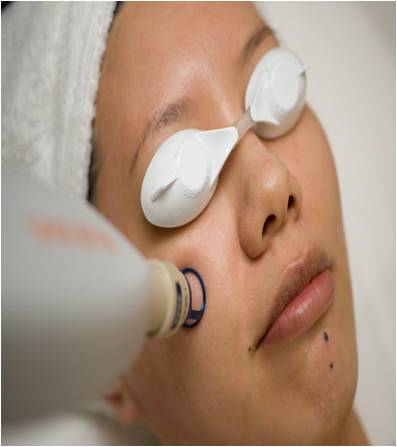
There are many types of lasers that are used for various types of skin conditions or problems, and new ones seem to be introduced on a regular basis. Among those used most commonly are:
- Carbon Dioxide Laser (CO2): The oldest type of ablative laser, the CO2 laser can improve skin texture, skin tone and wrinkles. The main drawback is that it's invasive, which means that there is a significant recovery period and you will have some residual pinkness in the treated area for about a month. Hyperpigmentation and hypertrophic or raised scarring may occur in people with darker, ethnic skin.
- Erbium-YAG (yttrium/aluminum garnet) or Er:YAG: The energy from this laser is absorbed by superficial layers of the epidermis, dissolving damaged or unwanted tissue. The pulsing actually lessens the heat on the skin, so there is less damage. It can greatly improve sun-damaged skin. This is a less invasive alternative to CO2 lasers. It is not as effective for deeper wrinkles, but the recovery period and downtime are shorter, so it's a trade-off.
- Q-switched Nd:YAG laser: This system can remove pigmentation lesions and blue or black tattoos. Tattoo removal usually takes between eight and 12 sessions.
- High-Power Long-Pulse Nd:YAG: This system was designed to remove both vascular lesions and hair. This laser can be used on dark skin.
- Long-Pulsed Nd:YAG laser: This laser is good for vascular lesions, facial flushing, redness, broken capillaries, and telangiectasia (purple or blue spider veins on the face).
- Fractionated lasers such as Fraxel target the small areas of skin where damage has occurred, leaving the surrounding skin untouched. The Fraxel laser or other fractionated lasers may be best for wrinkles around the eye. For more information, please visit our comprehensive article about the Fraxel laser.
source : facialplasticsurgery
 There are many types of lasers that are used for various types of skin conditions or problems, and new ones seem to be introduced on a regular basis. Among those used most commonly are:
There are many types of lasers that are used for various types of skin conditions or problems, and new ones seem to be introduced on a regular basis. Among those used most commonly are: